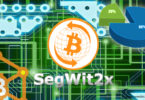India has been looked as one of the nations that would shape Bitcoin’s future in the coming years.
In 2009, Satoshi Nakomoto proposed a new protocol which will used P2P networking, proof work and public key cryptography. He combined all these three protocols to invent bitcoin. It is the world’s first decentralized online currency. Instead of a centralized governing body (central bank), Bitcoins can be issued by anyone with a powerful personal computer (miners), by solving extremely difficult mathematical problems. The problems are automatically made harder to ensure that the overall supply of Bitcoins is controlled. Once you send a bitcoin the transaction is broadcasted over the network once verified (cryptographically authenticated), it’s updated within the public ledger called block chain.
Before we get deeper and understand what is bitcoin, lets understand what are the characteristics of a digital currency, it’s an Internet-based form of currency or medium of exchange distinct from physical (such as banknotes and coins) that exhibits properties similar to physical currencies, but allows for instantaneous transactions and borderless transfer-of-ownership.
That’s correct instantaneously! But wait can we carry out an instantaneous cross border transaction using digital form of a fiat currency? The answer is no, because today when one purchases a product from a different locale, he cannot just transact in a single currency, he will pay in the native currency which will be transferred to sellers native currency taking days, some charges and through multiple intermediaries. But when he transacts in one form of payment and the sell is completed in few minutes, that changes things, which is achieved through bitcoin.
We had digital currencies for a long time and payment system which allows us to transfer money online from one user to another, but what is special or unique about bitcoin that it’s a decentralized network which allows transfer of money between two users without a third party. With bitcoin money can be transferred to anyone anywhere in the world, it is as simple as sending an email.
Bitcoins first transaction on record: In 2010 a man from Florida tried to transact in bitcoin, offered some 10,000 bitcoin for pizza. A man in London accepted it and placed an order to order him pizza. By end of 2012 blogging site WordPress and early 2013 Reddit started accepting bitcoin (first major sites which would accept bitcoins) signaling the mainstream acceptance.
Above is how the bitcoin address looks, transactions are sent and received using these address, they are hard to remember, so users normally scan the QR address. Bitcoin can be broken down into 8 decimal places, one can send fraction of bitcoin so any amount money can be represented. With bitcoin every transaction is public everyone can see the amount been transferred without knowing the identity of the person.
The above graph shows the fluctuation of the currency, it started at 1 USD – 1309 bitcoin in October 2009 to 1 bitcoin – 1600 USD as of March 2017
Bitcoin is banking without banks, most currencies are issued by a central authority which controls the money supply (like RBI), and bitcoin is a p2p system not governed by any central authority. Unlike any Fiat currency bitcoin is created using fixed set of rules. The basic idea was to create money whose value cannot be manipulated by central authorities.
Internet changed the way people communicate; bitcoin has changed the way how money works. It’s a global decentralized money. Called – Money of the Future – Bitcoin was created as an alternative to banking system (post 2008 crisis)
A perfect example to establish why currency free of government control is required was post 2012–13 Cypriot financial crisis, where people tried to get money out of the cash machines but electronic transfers where stopped by the regulatory body. It was like stealing money from people’s bank accounts.
Bitcoin and India
India has been looked as one of the nations that would shape Bitcoin’s future in the coming years. A report suggested that since demonetization exercise carried out by the government has helped doubled the weekly volume of bitcoin trading in India. The increased trading helped push the digital currency’s value to recent highs. The latest RBI warning seems to have been prompted by the surge in the price of Bitcoin from about Rs 40,000/a piece in October 2016 to about Rs. 1,00,000 now.
Banking the unbanked: India is home to a billion people, a report prepared by PWC reported around 167 million people are still unbanked after the launch of Jan Dhan Yojana. Bitcoin can level the playing field and help bring developing nations like India into the global economy frame. If everyone one of those (unbanked population) could have a bitcoin address, they could be banked fairly quickly through bitcoin. Bitcoin can even be merged with the recent payment disruption like BHIM and Aadhar pay as one of the payment currency.
Instead the payment carried out in a fiat currency through the regular payment system, which ends up charging anything between 1.5% and 2% as MDR fee to the merchant. The merchant ends up paying on average 11,000 to 14,000 a month as MDR fees. The merchant can accept payments using bitcoin which would reduce the transaction fees drastically. According to Zebpay (a leading Indian bitcoin exchange), it charges a minor transaction fee between 500 (0.80825 USD) – 8,000 (13.028 USD) bits depending on the number of bitcoins you send.
In conclusion, Bitcoin will do to the banking industry what email did to the postal service. The email did not make postal service irrelevant however forced the post office to concentrate on their strengths like their reach to remote rural areas, providing banking to low income population etc. and less on their weaknesses. That’s the technology part of it, as per economics, perfect currency should have limited supply, easily recognizable, durable, as well as portable and that’s exactly what bitcoin is.
The problem that we can foresee is the pace of change in regulations; change in regulation usually takes a route of develop, propose and adopt which generally takes a period. Regulations or regulatory changes typically evolve at a slower pace than innovation thereby killing it by declaring it illegitimate. Also as its not been governed by a central authority bitcoin tends to fluctuate widely and to be used globally its volatility needs to settle down.







